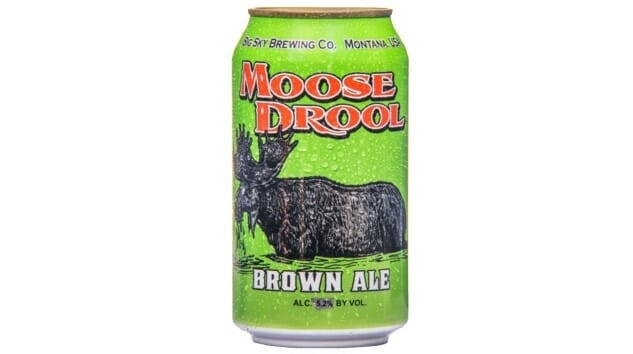My Month of Flagships: Big Sky Brewing Co. Moose Drool Brown Ale
Photo via Big Sky Brewing Co.
This essay is part of a series this month, coinciding with the concept of Flagship February, wherein we intend to revisit the flagship beers of regional craft breweries, reflect on their influence within the beer scene, and assess how those beers fit into the modern beer world. Click here to see all the other entries in the series.
In my early exploration of the craft beerscape, taking place during my college years in the mid-2000s, there were few styles that held more appeal to me than moderately malty amber and brown ales. By no means was I alone, either—these were beer styles that provided the ideal safe harbor in what could be a somewhat intimidating beer world. A classic American amber ale or brown ale was almost always a safe pick for the craft neophyte, lacking the challenging bitterness that might be found in pale ale or IPA, or the roasty astringency of stronger porters or stouts. They promised a mild, warming, welcoming sweetness—although far less saccharine than the juice bombs of today—that helped an emerging audience of beer geeks become gently accustomed with the heart and soul of beer brewing: Malted barley.
Eventually, of course, my tastes expanded in all the expected directions. I gained a tolerance, and then an appreciation, for American hops. I came to enjoy the dry, bitter roastiness of classic American stout. My mind was blown, and then reorganized, to include tart and funky beer styles in its mental rolodex. I went on the exact same journey as you likely did yourself … but I simultaneously held on to an appreciation for those amber and brown ales of old. It was only a few months ago, in fact, that I wrote Endangered Beer Styles: Amber Ale, a remembrance of how much that subtly malty, balanced style meant to craft beer’s evolution, neglected though it may be in the modern era. And “American brown ale” fits right in alongside it, a fellow style that is now largely in hiding, existing on the fringes of a scene that currently shows little interest in subtlety, or flavors that aren’t immediate and bombastic.
And of all the brown ales I regularly turned to during those earlier days of beer exploration, Montana’s own Moose Drool Brown Ale must have been the one I drank the most. Hell, I once homebrewed a clone of this beer around 2011 or so, and subsequently based a few recipes (brown ale/rosemary pork stew!) around that beer. Well priced, widely available and dependably more flavorful than many of its competitors, it was a reliable fridge staple of my post-college years; the kind of beer you could offer to most guests without fear that it would be too sweet, too bitter or too anything for their liking, while still being far more engaging than whatever light lager was coming out of the cheap 30-pack. It was (and is) a happy medium of the beer world.
It’s also one of a few brown ales to qualify as a true flagship for its brewery, Big Sky Brewing Co. Founded in 1995, Big Sky has long been a standard-bearer for its state, even as the number of breweries in Montana has crept slowly upward—as of last year, it was actually #2 in the nation in terms of breweries per capita, thanks to a lower population than many states. Big Sky, however, has maintained its status as Montana’s largest craft brewer, with Moose Drool as its most enduring symbol. Surviving the move from bottles to cans, along with various redesigns (the current, lime-green cans are a bit odd to behold), the appetizingly named “Moose Drool” conjures an image that is uniquely Montana, with a nod to the state’s wide swaths of wilderness.
In terms of construction, Moose Drool is an ideal example of what homebrewing textbooks used to stress was “American” brown ale, citing a distinction between this style created by American homebrewers and the classical English brown ales that came before. In comparison with those historic British brown ales, the American version was amplified in all the usual ways: A touch stronger, a bit more assertively roasty, and with a greater flavor/bitterness presence from American hops. In effect, it made American brown ale a bit less of the nutty, bready English ale and more the milder little brother to American robust porter, although some of the English brown ale character did remain intact. In recent years, however, as fewer brewers bother with “brown ale” at all, these old distinctions are far less likely to matter in any substantive way—more and more often, brewers simply label some taproom one-off as “brown ale” and leave it at that.
-

-

-

-

-

-

-

-

-

-

-

-

-

-

-

-

-

-

-

-

-

-

-

-

-

-

-

-

-

-

-

-

-

-

-

-

-

-

-

-








































